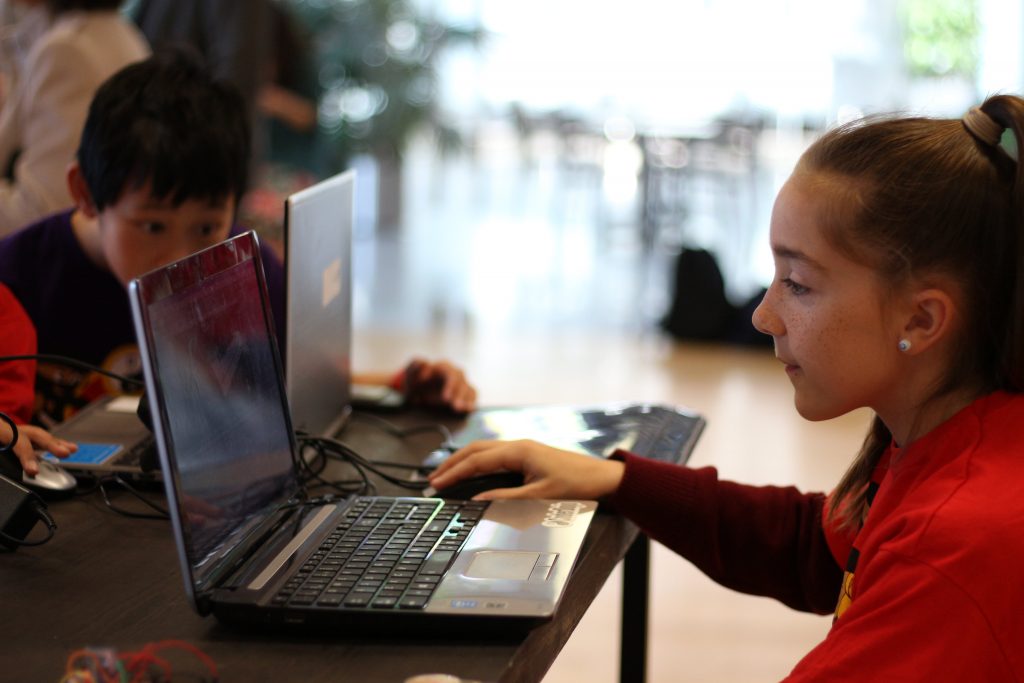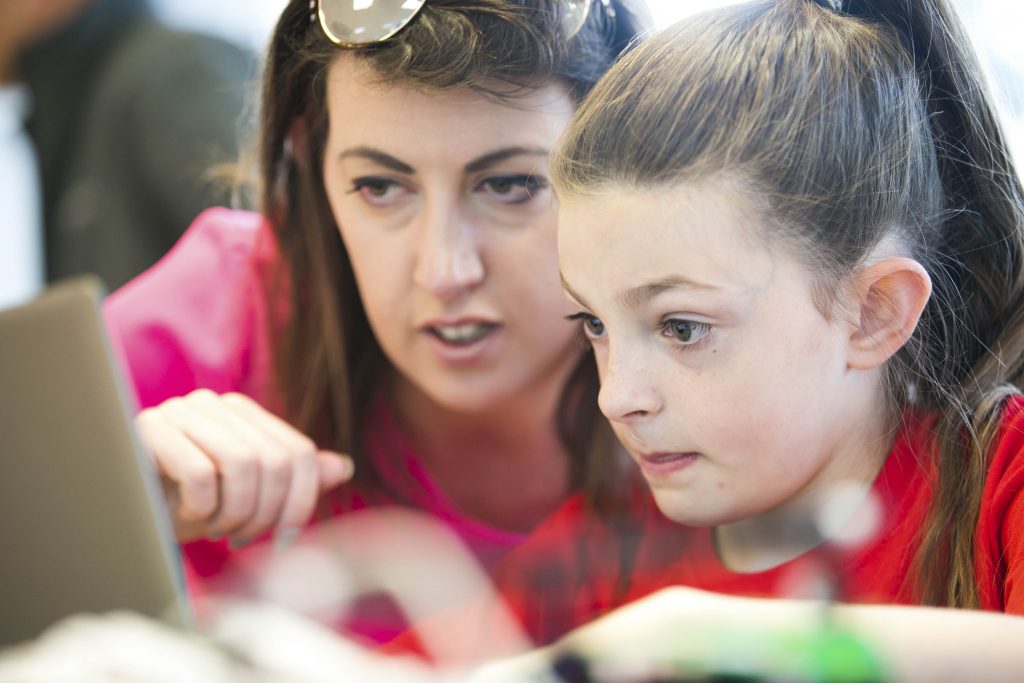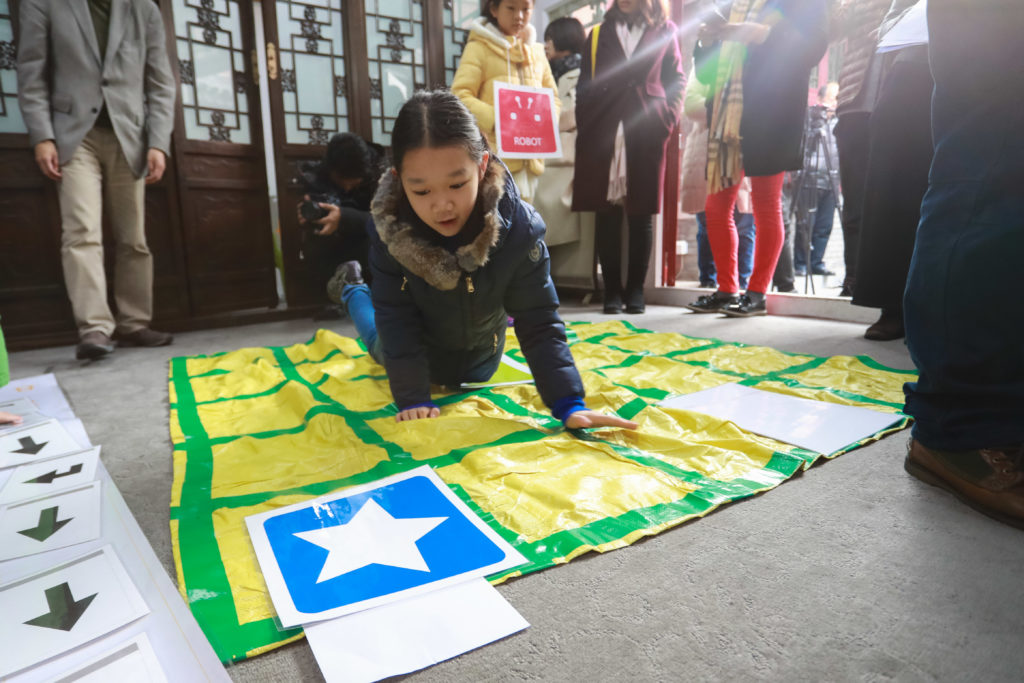
11th October 2018
Utilising Targeted Invites To Attract and Retain Girls in Dojos!
At CoderDojo we think it’s paramount that all of us together make a conscious, consistent, and collaborative effort to increase the number of girls who learn how to create with technology. To give you practical advice about this for your clubs, we’ve been gathering data over the past few months, and today we’ll tell you about one simple and really effective way to get more girls engaged at your Dojo.

A bit of background on the data
In 2017, we released a guide called Empowering the Future, a comprehensive booklet full of practical approaches to engage and sustain girls at Dojos — all of them tried and tested by you in the community.

Dojos could sign up to test our recommended approaches further, and to them we sent this guide, plus a survey about the gender diversity at their clubs. Then six months later, after they’d had time to try out some approaches, we sent them a second survey! To find out what had worked particularly well in the Dojos to recruit and sustain female Ninjas, we looked into the data and also interviewed Dojo volunteers.
“Girls in our Dojo love having an outlet for their creativity and are inspired by seeing the projects other Ninjas are working on.” — Wojciech Pawlak, champion of CoderDojo Poland
And it turns out that one highly effective best practice we had featured in the guide is the use of targeted invites!
Targeted invites are pretty much exactly what they sound like

Targeted invites are email or postal invites Dojos can send to:
- Youth clubs, libraries, and girls’ schools in their local area to invite girls who have not yet attended a Dojo to join in the fun next time — we’ve put together a template invite letter for this that you can use.
- The parents/guardians of girls who have previously attended a Dojo to encourage the girls to return to your next Dojo term or session — and we’ve put together another template invite letter for this!
Make your targeted invites effective!
You can use our template letters as a starting point, and change them so they fit your needs. The key is for them to be clear and engaging. Here are some top tips on making your invites work particularly well:
Describe your Dojo activities:
- In a way that highlights the chance to be creative, emphasising that attendees can make something new and of specific interest to them. Examples include activities incorporating music (e.g. Sonic Pi) or art and design (e.g. Scratch).
- In terms of clearly defined goals, e.g. ‘we will make X’, or ‘we will do Y’. Avoid general descriptions like ‘you can explore coding’ or ‘you will be able to work on your own projects’.
- Using non-computing terms and concepts that people are likely to be familiar and comfortable with. For example, ‘writing stories’, ’sharing with friends’, or ‘jelly babies’.
- To let attendees know they can bring a friend. Young people are often influenced by peers, so having a friend come along to the Dojo can make the environment seem more welcoming.

Avoid the following in your invites:
- Jargon: don’t use words or phrases that only to people who are already familiar with a topic would know, such as ‘CSS’, ‘Python’, ‘scripting’, ‘prototype’
- Competition: don’t describe your Dojo session in a way that makes it sound like a contest (e.g. with terms like ‘the best’, ‘winning’) or like it involves being compared to others, as opposed to comparing and discussing ideas or approaches to a problem.
- Showcasing: don’t make it sounds like attendees will have to demonstrate what they know to other people, or even present their work to a group (e.g. phrases like ‘Show us what you can do’, ‘Come and share your computing knowledge’)?
How one team in the CoderDojo community used target invites

Case study: Claire Quigley, Craig Steele, and Martin Goodfellow from the Glasgow Science Centre Dojo
“One day, this Dojo’s team realised that the numbers of girls attending their Dojo had been low for two to three months, and that no girls had signed up for the upcoming Dojo event. To try to rectify this, they sent personalized invitation emails to five girls (and their parents/guardians) who had attended before. Most signed up and came along!
After doing this for two or three events with good results, the team also started holding back around 5 tickets (out of 25) and sending targeted invites to girls who had previously attended. They would normally send the email invitation to the Ninja and her parent/guardian, which would include either a booking link or a link to the ticket itself. If any of the tickets weren’t taken, they add them to the general ticket pool. This approach was a major factor in getting the percentage of girls at the Science Centre Dojo from 18% to 26%!“

The aim of interviewing recipients of the CoderDojo Girls pack is to collect qualitative data following on from a survey that was completed earlier in the year. The following is a synopsis of what we asked and what we learned. These interviews are to collect qualitative data following on from a survey that was completed earlier in the year.
For more see: coderdojo.com/girlsinitiative